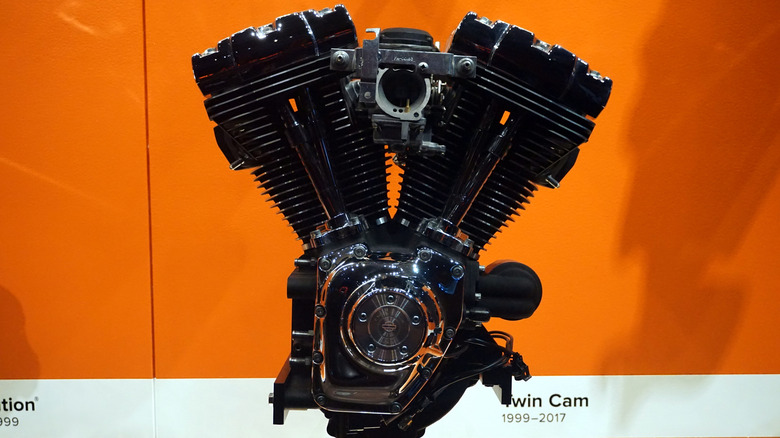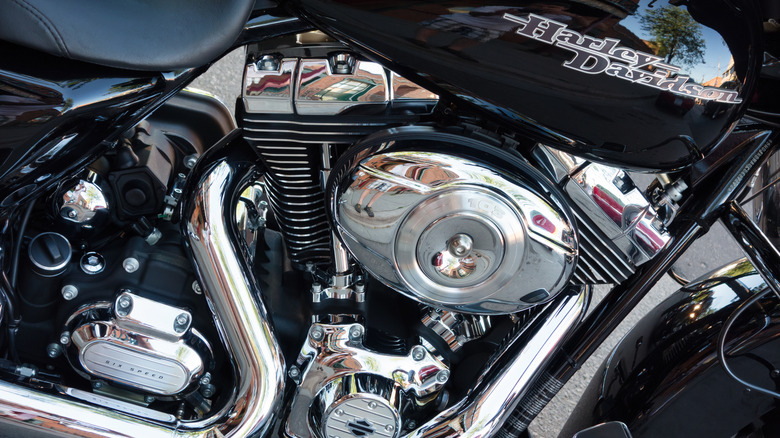The Biggest Problems With Harley-Davidson's Twin-Cam Engine
Despite declining sales and revenue in 2025, Harley-Davidson has been the dominant American motorcycle maker for most of its long and illustrious history. Harley has produced a succession of engines over that span, including the Twin Cam V-twin that debuted for the 1999 model year. Harley's Twin Cam engine had a camshaft and timing chain for each cylinder and was designed to deliver improved performance, reliability, and efficiency.
Harley had high hopes for its Twin Cam engine but there were problems right off the bat. Reports of oil leaks high on the engine came early, and substandard timing chain tensioners were a bigger problem. The plastic cam tensioning gears and shoes could break apart when exposed to heat and friction from normal operation, and pieces found their way into coolant passages and the oil pump mechanism. Inadequate cooling or lubrication could knock out an engine without warning, and many owners lost their Twin Cams to disintegrating plastic tensioners.
Some owners swapped in timing gears
None of Harley-Davidson's engineers have stepped forward to explain why they didn't use a more durable and heat-resistant material for the cam tensioners, but it was likely a financial rather than a scientific decision. But in what was possibly an attempt to save a few pennies on each engine, Harley ended up doing substantial damage to its reputation.
Owner reports of timing chain tensioner failures are abundant, and these issues can kill an engine while the bike is on the road. Many Twin Cam Harley owners chose to solve their own problem by installing a new cam and converting to a gear-driven timing system, and the company started using stronger tensioners starting in 2006 or 2007 depending on model. Despite this late fix, the Twin Cam 88 is considered one of Harley's worst engines thanks to the tensioner issue and a few other foibles. The Twin Cam's innovative design created unique opportunities for failure, including the use of a single crank pin to keep the two halves of the flywheel synchronized.
The Twin Cam engine's minor issues
This was another way to save a little money, although a tiny intolerance between the two sides of the flywheel could easily warp the crank pin. This led to crankshaft runout, where the shaft begins to rotate off-axis and wobble in place. Runout can damage bearings, connecting rods, and other engine internals and necessitate a rebuild or replacement of the engine.
Transmission issues and overheating have also been common sources of complaints by Twin Cam Harley owners. Some claim the shifting action is clunky and that neutral can be hard to find, and the bike's cooling system was upgraded when owners complained about uncomfortable heat coming off the engine. The earliest years of the Twin Cam 88 had a tendency to overheat at idle, although the updated cooling system helped many riders. After these missteps with the Twin Cam engine, Harley introduced the Milwaukee Eight in 2016.


